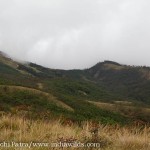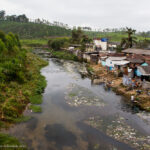IndiaWilds Newsletter Vol 2 Issue IX
It is my pleasure to bring you the IndiaWilds Newsletter Vol.2 Issue IX. In this issue we use the mantra for success and examine who is and can be the real wildlife experts and their role in conservation.
This newsletter is available online. To view and post your comments check at: http://www.indiawilds.com/diary/indiawilds-newsletter-vol-2-issue-ix
Mantra for Success:
“Genius is 1 percent inspiration and 99% perspiration” – Thomas Alva Edison
We have been told about this statement many a times during our growing up phase. I myself had quoted this in several debate competitions. However, I had never visualized in concrete terms the extent of effort needed for a person to be successful.
In the book titled “Outliers – The story of Success” Malcolm Gladwell emphasizes the need for hard work through his 10,000 hour rule. He has clearly mentioned that only talent doesn’t ensure success. However, talent combined with honing your skills over a long period of time (10,000 hours as per Malcolm Gladwell) ensures that a person becomes expert in his or her field. He gives the example of experts like Bill Gates, founder of Microsoft; Bill Joy Co-founder of Sun Microsystems who rewrote Unix operating system; and the Beatles group among many examples to support his theory that unless and until a person engaged in scientific research, computing, athletics, legal professional or for that matter any field – clocks an equivalent of 10,000 hours of hard work – the person can’t become a true expert.
So what is the relevance of this theory to the protection of our vanishing tracts of wilderness and wildlife?
Wildlife Experts:
Too often I find youngsters proclaiming themselves to be wildlife experts. Clicking a few photographs of tigers, visiting a few National Parks, reading a couple of wildlife books and scientific journals makes people feel that they have sufficient knowledge. During my childhood days I have grown up hearing ecology and ethology being taught to MSc students, have been walking in various wilderness places, waiting alone in waterholes in the night etc. Later on in my life, I have observed tigers for several hundred hours through my tele lenses leading me to believe that I know a thing or two about tigers. And one day that belief was badly mauled by a tiger or rather two of them and I am back as a learner with all humility. You may refer to that incident here: http://www.indiawilds.com/diary/tigers-in-the-dark
This brings a big question to my mind. How many experts do we have in India who really understand nature and can unravel its many mysteries?
If one goes by the 10,000 hour rule propounded by Malcolm Gladwell, I would say there are very few “real” experts in our midst.
The people who have the best chance of acquiring that expertise by spending the 10,000 hours are the many tribals who inhabit our wilderness areas. Unfortunately, many of our misguided NGOs who want our tribals to be “developed” in the narrow sense of the term are only succeeding in removing them from their areas of expertise. Today the children of the tribals no longer want to get into the forests. Rather they have been taught that watching the popular soap operas are much better than spending time in the forest. The unfortunate consequence is that they no longer know wildlife as their elders knew.
However, I won’t blame the NGOs. The NGOs are also doing what they feel is right. The main reason is that our traditional economic modeling has failed. At present we view our forests as source of timber and other non-timber forest produce. We have failed to gauge the true wealth of our wild heritage. Since we don’t value our wild heritage, we don’t value the knowledge possessed by these tribals, who know much more than any researcher can aspire to achieve during his or her PhD programme.
It may be pertinent to mention the experiences of Salim Ali, the noted Ornithologist who was the receipient of J. Paul Getty award for Wildlife Conservation and Padma Vibhushan, the second highest civilian award in India. In his autobiography “The Fall of a Sparrow” Salim Ali has mentioned that his duck ringing programme was hampered as the locals at Bharatpur and at other locations of his operation were unskilled in catching ducks and other waterfowl. His programme could later succeed when he discovered the knowledge and ability of the Sahni and Mirshikar tribes in catching ducks and waterfowl. The wetlands of Keoladeo Ghana National Park at Bharatpur were created in the early 1900s and it is not surprising that the locals didn’t have the traditional knowledge that the Sahni and Mirshikar tribes possessed.
So it is imperative to tap the knowledge of our tribals.
The next question that comes to our mind is how do we tap the knowledge of these tribals? The obvious answer is recruiting them in the forest department. However, apart from the obvious utility in protection of our wilderness areas, they can also be used in research.
Tapping knowledge of tribals: Will it work? Has it worked before?
Jane Goodall‘s research project in Tanganyika is a perfect testimony that this will work. The Gombe Stream Research Centre in Tanganyika was founded by Jane Goodall who started her observation of Chimpanzees in 1960. The Gombe Stream Research Centre was primarily manned by expatriate researchers and helpers. The job of the Tanzanian field staff was limited to tracking and locating chimpanzees, and ensuring the safety of the expatriate researchers. In May 1975, one Dutch woman and three Americans were kidnapped by rebel soldiers. This ensured that it was no longer feasible for expatriates to work there. Hence the management was forced to entrust the job of data collection to the Tanzanian staff that had been trained but hadn’t got an opportunity to do the data collection. Since then, for the last 35 years, the Tanzanian staff have been doing the job successfully. (Ref: National Geographic article by David Quammen)
Is it compatible with our Culture?
The Dutch psychologist Geert Hofstede’s research on cross cultural behaviour had thrown up some interesting dimensions. Among “Hofstede’s Dimensions” an important dimension is “Power Distance Index” (PDI) which reflects the attitudes of people towards hierarchy and authority. Using his research, one can safely assume that the PDI index of our tribals would be pretty high. Hence in areas where they are required to deal with authority and hierarchy, it would not be too easy for them to stand up and speak as an equal. Similarly, in cutting through a maze of bureaucracy, others with comparatively lower PDI index than the tribals would do a better job. If the tribals are used in research, in data collection, and day to day work of the forest department in maintaining the forests, then they would do a phenomenal job without being disadvantaged by their low Power Distance Index.
Use of tribals in research and conservation: A word of Caution and Way Forward:
Not everybody who is officially classified as a tribal by the Govt. of India, has deep knowledge. For example, groups like Muduvans who had moved into the forests around 900 years ago and are classified as tribals, have very little knowledge of wild animals. Infact, they live in mortal fear of the wild animals and are living in an unsustainable manner in the wilds.
Today, when we are in the process of relocating tribals and non-tribals villages from the interior of the forests – to create inviolate spaces for our wildlife – to the periphery, we need to identify those tribals who possess knowledge of the flora and fauna of the place and utilize them. We need to create a system for valuing and respecting their knowledge. This will ensure that the tribal families continue to learn and retain their traditional knowledge of the flora and fauna of the place.
Will our system allow the traditional knowledge to be valued and rewarded? It’s a billion rupee question. Look forward to your views on this. You can post your views here: http://www.indiawilds.com/diary/indiawilds-newsletter-vol-2-issue-ix
Conservation:
MoEF to declare Elephant as National Heritage Animal:
The Elephant Task force has suggested the Elephant to be declared as National Heritage Animal. For further details: http://www.indiawilds.com/forums/showthread.php?t=4744
Ungulate poaching racket in BRT:
A poaching racket has been unearthed by the forest department. The poachers have been using a .22 rifle which makes less noise and firing more number of times from close range till the animal drops dead. For further details check here: http://www.indiawilds.com/forums/showthread.php?t=4727
Mahseer Angling inside Cauvery Wildlife Sanctuary:
Contrary to the opinion of the MoEF, the Karnataka forest department feels that angling will lead to protection of Mahseer fishes in the Cauvery wildlife sanctuary.
http://www.indiawilds.com/forums/showthread.php?t=4844
Natural History:
Elephant Behaviour before Charge:
http://www.indiawilds.com/forums/showthread.php?t=4664
Wildlife Photography:
Images shared by our members between 10th Aug – 9th September, 2010 that depict interesting animal behaviour or are just plain beautiful..
Tusker – Bandipur by Roopak Gangadharan
http://www.indiawilds.com/forums/showthread.php?t=4573
Tiger – Bandipur by Praveen Siddannavar
http://www.indiawilds.com/forums/showthread.php?t=4686
Alarm call – Roopak Gangadharan
http://www.indiawilds.com/forums/showthread.php?t=4753
An animal with a sense of Humour – Tahr by V S Sankar
http://www.indiawilds.com/forums/showthread.php?t=4731
Common Kingfisher – Atul Dhamankar
http://www.indiawilds.com/forums/showthread.php?t=4621
Pied Kingfisher – Bibhav Behera
http://www.indiawilds.com/forums/showthread.php?t=4765
Kaas Plateau by Jitendra Katre
http://www.indiawilds.com/forums/showthread.php?t=4659
Lemon Emigrant by Jitendra Katre
http://www.indiawilds.com/forums/showthread.php?t=4760
Beautiful Frog – Dr Hari Venkatesh K R
http://www.indiawilds.com/forums/showthread.php?t=4775
Server and Other changes in IndiaWilds forums:
We have moved on to a new server to make indiawilds forums (www.indiawilds.com/forums/ ) faster and easier to access. Members from our smaller towns can now easily access IndiaWilds. I am sure this will help in our community building efforts.
The image size upload limit for members has been increased from 200 kb to 300kb with the longest side at 800 pixels. This will help in images with much more details being uploaded.
Look forward to your inputs and your support in preserving the last tracts of wilderness and wildlife left in this beautiful country. For other interesting articles and photographs please check:
http://www.indiawilds.com/forums/
The link to this Newsletter is available at: http://www.indiawilds.com/diary/indiawilds-newsletter-vol-2-issue-ix
All the newsletters can be found online at: http://www.indiawilds.com/diary/category/newsletter
In case, anyone of you has forgotten his/her user id and password can email the admin at the following email id administrator@indiawilds.com
Regards,
Sabyasachi Patra
www.indiawilds.com
Profile: http://www.indiawilds.com/profile.htm
Contact: http://www.indiawilds.com/contact%20us.htm
Facebook: http://www.facebook.com/pages/IndiaWilds/132629240481
- GoPro Hero 12 Black - 6 September,2023
- Leopards: The Last Stand - 2 July,2023
- Drifting in the Waters of Sundarbans - 26 March,2023











Leave a Reply